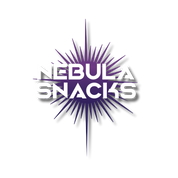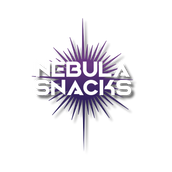When it comes to making healthier choices, understanding sugar labels is crucial. Sugar can go by many names, some more deceptive than others, and it's often lurking in unexpected places. In this quick guide, we'll unravel the mysteries of sugar labeling, delve into the world of artificial sweeteners and sugar alcohols, explore added sugars, discuss FDA regulations, and the American Heart Association's recommended daily sugar intake.
Cracking the Code: Different Names for Sugar
Sugar isn't always labeled as "sugar." Food manufacturers sometimes use alternative names to keep you guessing. Here are some common aliases for sugar:
- Sucrose: This is plain table sugar, derived from sugarcane or sugar beets.
- High Fructose Corn Syrup (HFCS): A sweetener made from corn, often found in sugary drinks and processed foods.
- Fructose: Naturally occurring in fruits, but also used as a sweetener.
- Glucose: A simple sugar used in various forms, including dextrose.
- Maltose: Found in malted foods and some cereals.
- Lactose: The natural sugar present in milk and dairy products.
- Honey: A natural sweetener, but it's still sugar.
- Agave Nectar: Often marketed as a healthy sweetener, but it's high in fructose.
- Maple Syrup: While less processed, it's still a sugar source.
- Brown Rice Syrup: A sweetener made from brown rice, but it's concentrated sugar.
It's essential to be aware of these names when reading ingredient lists. The higher up a sugar alias appears on the list, the more sugar the product contains.
The Sweet Deception: Artificial Sweeteners and Sugar Alcohols
Artificial sweeteners and sugar alcohols are sugar substitutes that provide sweetness without the calories of sugar. Common examples include:
- Aspartame: Found in diet sodas and sugar-free gum.
- Saccharin: Often used in sugar-free drinks and sugar substitutes.
- Erythritol: A sugar alcohol that provides sweetness without the calories, commonly used in sugar-free and low-carb products.
- Maltitol: Another sugar alcohol used as a sugar substitute, often found in sugar-free candies and desserts.
- Xylitol: Often used in sugar-free gum and dental products.

While they can be beneficial for those looking to reduce calorie intake or control blood sugar, they may have their own set of concerns. Some people find them to have an aftertaste, and there's ongoing debate about their long-term health effects. It's important to consume them in moderation and be aware of potential side effects like gastrointestinal discomfort with sugar alcohols.
Added Sugars: The Sneaky Culprits
Added sugars are sugars and syrups added to foods and beverages during processing or preparation. They contribute to extra calories without providing essential nutrients. Added sugars can be found in obvious places like candy and soda, but also in less obvious ones like pasta sauces and salad dressings.
Added Sugars Image (Image: A visual representation of foods with added sugars)
To spot added sugars on a label, look for terms like "cane sugar," "evaporated cane juice," "corn syrup," and "high fructose corn syrup." The American Heart Association advises limiting added sugar intake to no more than 100 calories (about 25 grams or 6 teaspoons) per day for women and 150 calories (about 37.5 grams or 9 teaspoons) per day for men.
While it's relatively easy to identify added sugars on nutrition labels due to FDA regulations, it's essential to be mindful of naturally occurring sugars as well, such as those found in fruits and dairy products. While these sugars aren't considered "added," they still contribute to your overall sugar intake.
FDA Regulations: The Push for Transparency
To help consumers make informed choices, the U.S. Food and Drug Administration (FDA) implemented new labeling rules in 2020. These rules require food manufacturers to list added sugars separately on nutrition labels, making it easier to identify how much sugar is naturally occurring in a product and how much has been added.
This transparency empowers consumers to make better decisions about their sugar intake. When reviewing a nutrition label, look for the "Added Sugars" section. This section shows the amount of sugar added during processing or preparation, helping you distinguish between natural and added sugars.
The American Heart Association's Recommended Daily Sugar Intake
The American Heart Association (AHA) recognizes the need for guidelines on sugar intake to promote heart health. Their recommendations are based on scientific evidence and aim to reduce the risk of heart disease:
- Women: Limit added sugar intake to no more than 100 calories per day (about 25 grams or 6 teaspoons).
- Men: Limit added sugar intake to no more than 150 calories per day (about 37.5 grams or 9 teaspoons).

The AHA also emphasizes that these limits apply to all added sugars, not just those in specific foods or beverages. This includes sugars added during cooking or at the table.
Conclusion: Sweet Savvy Shopping
Understanding sugar labels is your key to making healthier choices. Take a closer look at the ingredients list and nutrition label, watch out for added sugars, and consider the American Heart Association's guidelines for sugar intake.
When you're shopping for snacks like Nebula Snacks' zero sugar added chocolate bites & chips, you're making a smart choice for your health and taste buds. These snacks provide a delicious alternative that allows you to enjoy the sweet taste you love without the added sugars you don't need.
Stay sweet, but stay savvy!
Now, you're equipped to navigate sugar labels and make informed choices while enjoying delicious, sugar-free snacks like Nebula Snacks.
Happy snacking!

